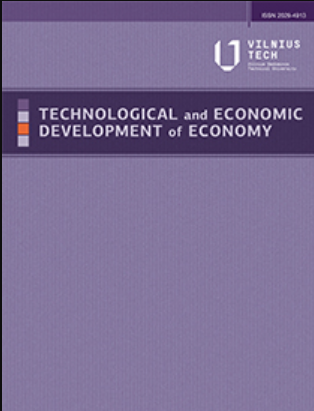机器人应用与城市全要素生产率:来自中国的证据
IF 4.8
2区 经济学
Q1 ECONOMICS
引用次数: 0
摘要
工业机器人正在对中国经济产生深刻而持久的影响。本研究从理论和实证角度探讨了工业机器人的应用及其对城市全要素生产的影响。研究使用了 2003 年至 2017 年期间 286 个地级市的面板数据。研究发现第一,机器人的采用促进了城市全要素生产率的提高。第二,与东部发达地区和市场化程度较高的地区相比,西部欠发达地区和市场化程度较低的地区采用机器人对城市全要素生产率的发展具有更积极的影响。第三,采用机器人可以增强城市创新活力,提高全要素生产率,促进产业集聚,提高技术进步或技术效率。这些研究结果提供的政策启示可以指导未来的技术进步,促进城市高质量发展。本文章由计算机程序翻译,如有差异,请以英文原文为准。
ROBOT ADOPTION AND URBAN TOTAL FACTOR PRODUCTIVITY: EVIDENCE FROM CHINA
Industrial robots are having a profound and lasting impact on China’s economy. This research examines the deployment of industrial robots and their effects on urban total factor production from theoretical and empirical angles. It is created using panel data from 286 cities at the prefecture level between 2003 and 2017. It is found that: First, robot adoption promotes urban total factor productivity. Second, adopting robots has a more positive influence on urban total factor productivity development in western, underdeveloped, and less market-oriented areas compared to the developed and market-oriented areas in the east. Third, adopting robots could enhance urban innovation vitality, increase total factor productivity, boost industrial agglomeration, and improve technological progress or technical efficiency. Policy enlightenment provided by these findings can guide future technological advancements and promote high-quality city development.
求助全文
通过发布文献求助,成功后即可免费获取论文全文。
去求助
来源期刊
CiteScore
10.00
自引率
8.50%
发文量
66
审稿时长
15 weeks
期刊介绍:
Technological and Economic Development of Economy is a refereed journal that publishes original research and review articles and book reviews. The Journal is designed for publishing articles in the following fields of research:
systems for sustainable development,
policy on sustainable development,
legislation on sustainable development,
strategies, approaches and methods for sustainable development,
visions and scenarios for the future,
education for sustainable development,
institutional change and sustainable development,
health care and sustainable development,
alternative economic paradigms for sustainable development,
partnership in the field of sustainable development,
industry and sustainable development,
sustainable development challenges to business and management,
technological changes and sustainable development,
social aspects of sustainability,
economic dimensions of sustainability,
political dimensions of sustainability,
innovations,
life cycle design and assessment,
ethics and sustainability,
sustainable design and material selection,
assessment of environmental impact,
ecology and sustainability,
application case studies,
best practices,
decision making theory,
models of operations research,
theory and practice of operations research,
statistics,
optimization,
simulation.
All papers to be published in Technological and Economic Development of Economy are peer reviewed by two appointed experts. The Journal is published quarterly, in March, June, September and December.

 求助内容:
求助内容: 应助结果提醒方式:
应助结果提醒方式:


